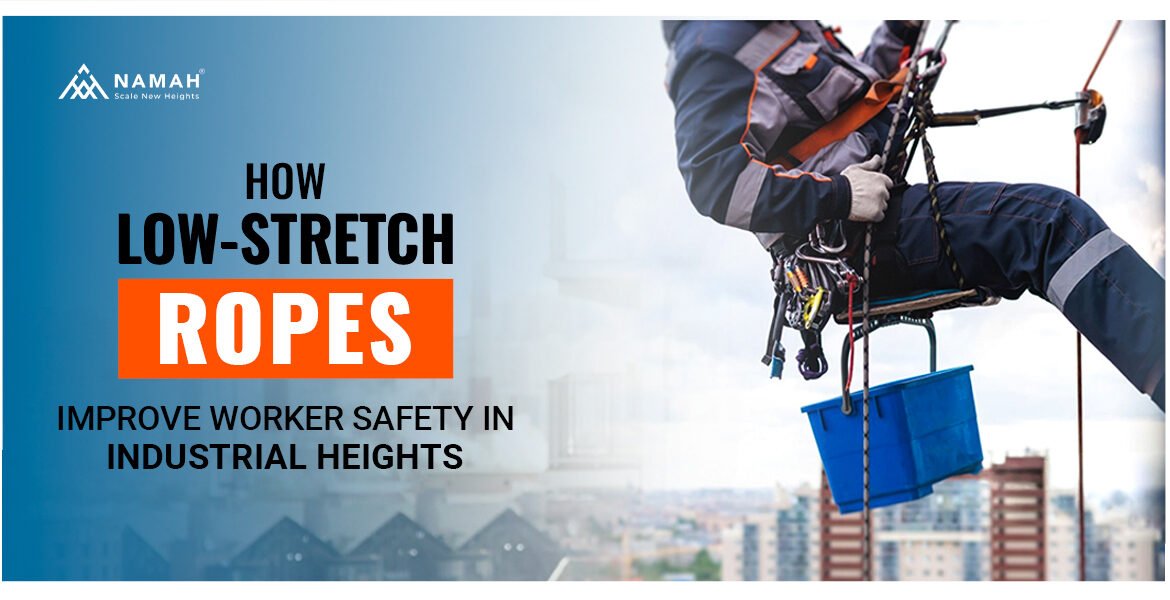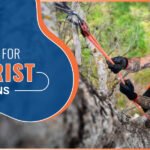On a clear morning in the monsoon break, a façade team clips in at the 23rd floor. The city is waking up, horns below, a crosswind tapping at their jackets. One worker leans back, trusts the line, and begins the first controlled descent. Nothing lurches. Nothing bounces. The device hums instead of grabbing. That calms those steady millimetres of movement—that’s what low-stretch ropes are built for.
Most people know dynamic climbing ropes for their “soft catch.” Industrial work rarely needs that bounce. It needs precision. It requires a rope that stays put when you load it, translates your hand movements into predictable motion, and keeps you centred on the work, not swinging toward a beam or a parapet. That’s why low-stretch (often called semi-static) lines have become the quiet heroes of rope access, rescue, and maintenance.
What “low-stretch” feels like on a real job
If you’ve ever stepped over an edge and felt your stomach drop as the rope “settled,” you already understand the difference. A good industrial line barely gives in the working range. You lean back: it holds you where your plan says you should be. You lower a stretcher: the motion is smooth enough that the casualty stops watching your hands and starts watching the horizon. You change direction in a narrow hatch: no spring, no rebound, just a clean transition you can trust.
That steadiness shows up in small ways all day. Descenders start and stop without a surprise. Backup devices track more consistently. Communication is easier because every instruction translates predictably into movement. On glass, steel, concrete, rigging frames, and towers, the rope becomes the quiet partner you forget about; that’s the point
Built for the places you actually work
The fibres and the weave decide how a rope behaves months after the first use. For most access and rescue work, polyester is the backbone: it doesn’t get rubbery when wet, shrugs off UV better than many elastic blends, and keeps its geometry under load. The core carries the strength; the sheath takes the abrasion and decides how the rope feels in your hand. Tighter weaves and higher sheath coverage matter more than they sound; they’re the difference between a rope that still knots cleanly in week twenty and one that feels tired by week three.
That’s how we spec our Semi-Static Ropes at Namah: low working elongation for control, robust sheaths for long lowers and gritty edges, and finishing that keeps the hand consistent even after wet/dry cycles. If your projects cross into docks, decks, or tow points, our Marine Ropes apply the same philosophy to salt, sun, and constant wetting. And because a rope is only as good as the system it sits in, we keep handling familiar tasks across Harnesses and slings so your muscle memory follows you from one task to the next.
Safety isn’t only about the big numbers
Standards matter. They’re the common language between site leads, auditors, and insurers, and they’re the reason labels mean something outside the catalogue. But the day-to-day safety you feel comes from smaller, more human details: a device that doesn’t chatter because the rope isn’t bouncing; an anchor that stays in line because the strand doesn’t sag; a worker who moves with quiet confidence because the system responds the same way every time.
Durability is part of that safety. A sheath that resists glazing on long descents, a core that doesn’t flatten over a bollard, fibres that don’t soak up water, and double the weight of the line—these are not just cost conversations. They’re risk conversations. Ropes that age gracefully keep behaviour predictable, and predictable behaviour prevents mistakes.
Where low-stretch lines earn their keep
Ask a façade crew after a windy day which rope they want tomorrow, and they’ll point to the calm one. Ask a rescue team what matters when lowering a patient through a hatch, and they’ll talk about smooth, inch-by-inch control. Offshore techs, bridge inspectors, turbine teams anyone who works at height around structures will tell you the same thing: shorter, cleaner movements prevent problems before they start. That’s exactly what low-stretch delivers.
If you’re building or updating kits, start with a workhorse from Semi-Static Ropes for access and rescue. Add Marine Ropes when your scope includes mooring or tow tasks. Keep the PPE ecosystem coherent with Harnesses so the whole system feels like it was designed together because it was.
Care that keeps confidence high
The simplest habits often yield the greatest rewards. Use rope bags and edge protection so grit doesn’t grind the sheath from the inside out. Rinse after salt exposure and air-dry—no heaters. Rotate ends so the first twenty metres don’t live the hardest life every day. Log use. If you feel a flat spot, see sheath slippage, or notice a hard glazed section, retire it from life-safety duty without nostalgia. A rope that told you the truth for months deserves that same honesty in return.
From our bench to your site
In our workshop, low-stretch isn’t a line on a spec sheet; it’s the sound a device makes when it starts smoothly, the feel of a strand that doesn’t sag under a steady lean, the way a sheath looks after weeks on rough parapets. We cycle ropes wet and dry, pull them through real devices, and check that the numbers on paper match the behaviour in your hands. When you choose a Namah rope, you’re choosing that quiet, repeatable calm, the kind you can plan around.
If you want help matching a rope to your reality diameter for your descenders, edges you worry about, or weather you actually face, tell us, and we’ll point you to the right starting place in Semi-Static Ropes or Marine Ropes. The goal is always the same: a day that feels uneventful, for all the right reasons.




